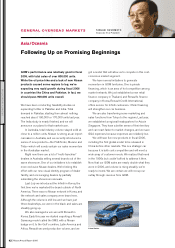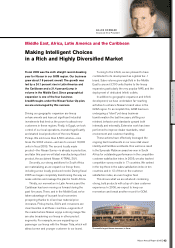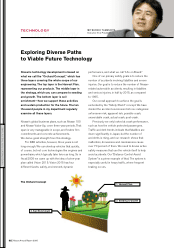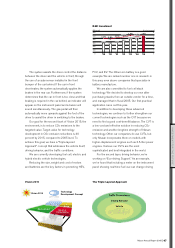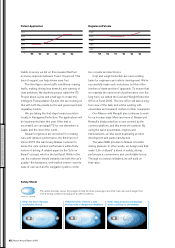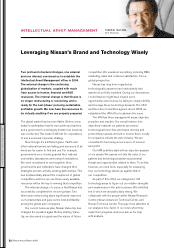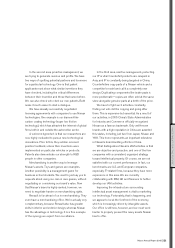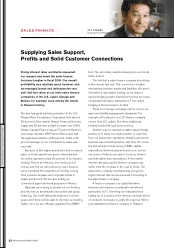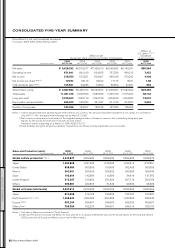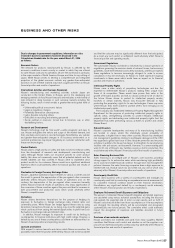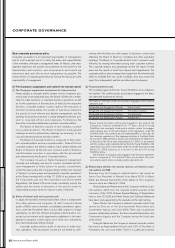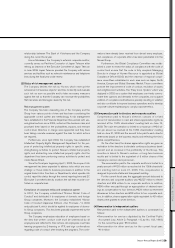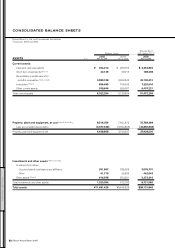Nissan 2006 Annual Report Download - page 54
Download and view the complete annual report
Please find page 54 of the 2006 Nissan annual report below. You can navigate through the pages in the report by either clicking on the pages listed below, or by using the keyword search tool below to find specific information within the annual report.
SSaalleess FFiinnaannccee
SALES FINANCE
Nissan Annual Report 2005
52
Supplying Sales Support,
Profits and Solid Customer Connections
Rising interest rates worldwide squeezed
our margins and made the sales finance
business tougher in fiscal 2005. Our overall
profitability was relatively good, however, and
we managed losses and delinquencies very
well. Net loss ratios at our main sales finance
companies in the U.S., Japan, Canada and
Mexico, for example, were among the lowest
in Nissan’s history.
We also had great market penetration. In the U.S.,
Nissan Motor Acceptance Corporation took almost
50 percent of the market. Nissan Financial Services,
Japan had 36 percent, a slight increase over 2004.
Nissan Canada Finance was at 73 percent thanks to
more lease demand. NR Finance Mexico also had
the highest penetration at 34 percent. That’s a 43
percent average, so our contribution to sales was
very high.
Because of this higher penetration and increased
sales, our total assets have grown. Asset-backed
securities represent nearly 50 percent of our finance
funding. They’re an effective, low-cost source of
money, and one we will continue to use. However,
we’ve increased the proportion of funding coming
from commercial paper and corporate bonds in
Japan and the U.S. We are also setting up
commercial paper and bond programs in Mexico.
Basically we’re trying to spread out our funding
and rely less on asset-backed securities and group
financing. Our credit rating has improved in recent
years, and I think we’ll be able to diversify our funding
further once we are officially upgraded from BBB+
to A. The secondary markets already price our bonds
at the A level.
The risk that a sales finance company should pay
is the interest rate risk. This comes from duration
mismatches between assets and liabilities. We aren’t
interested in speculative trading, so we utilize a
natural hedging system that doesn’t involve too many
complicated derivative transactions. Term-match
hedging is the best way to do that.
There is no foreign exchange risk for us from an
asset and liability management standpoint. For
example, all funding for our U.S. finance company
comes from U.S. dollars. Our other entities are
similarly funded through local currency.
Another way we maintain a stable natural hedge
position is to utilize our equity position or cash flow
from our automotive operations. Nissan’s automotive
business has excellent positive cash flow. Of course
the first priority for that money is R&D, capital
expenditure, dividend payments and so on, but we
use some of that excess cash to fund our finance
activities rather than depositing it. If the market
interest rate goes up, the finance company may
suffer from the increase in the cost of funds. The
automotive company simultaneously recognizes
higher interest rate income because it is lending to
the sales finance company.
A finance company is a capital-intensive
business and requires considerable investment,
particularly for IT. One thing we evaluate before
setting up in a country is the minimum annual volume
of contracts necessary to justify the expense. We’ve
just established a finance company in Thailand
JOJI TAGAWA
Corporate Vice President
INVESTMENT FOR THE FUTURE


